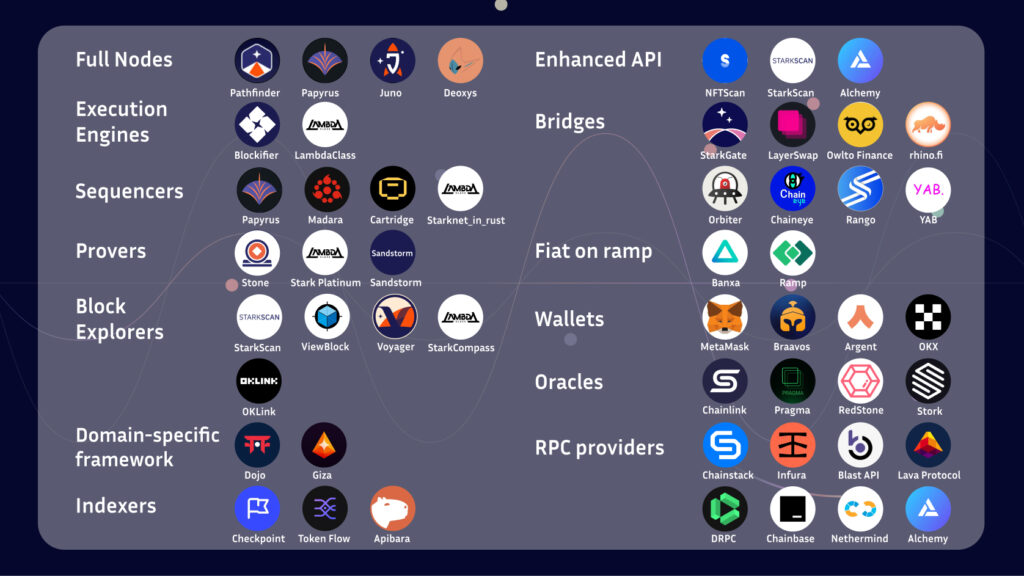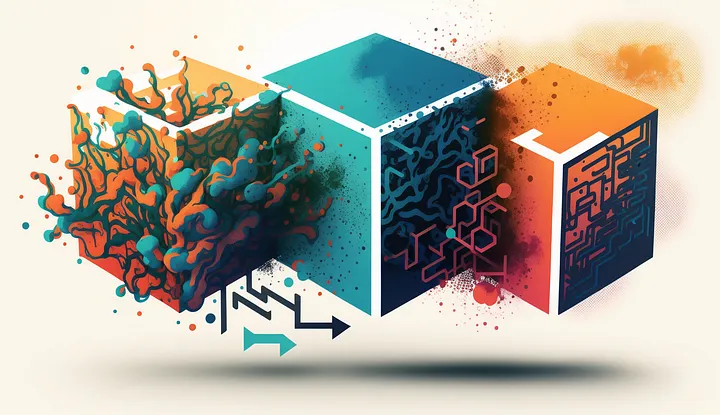Appchains are a tailor-made Layer 2, or Layer 3, to suit your dApp’s specific needs
TL;DR
- Appchains are customizable L2s (potentially implemented as a future Layer 3 solution) that inherit the security of the layer they settle on.
- Appchains are another dish in Starknet’s extensive scaling buffet that brings another flavor to the range of Starknet’s scaling solutions, allowing dApps to optimize where and how they scale.
- Appchains can be built and operated using various stack options, including StarkWare’s services or other components in the Starknet stack – which now has more than 50 different providers.
Intro
Blockchain technology is characterized by continuous innovation, and one term that’s been gaining significant attention is ‘appchains.’
Appchains are tailor-made L2 networks designed for specific applications (or a group of applications), offering developers the freedom to fine-tune various aspects of these networks to align with their application’s requirements. Such requirements may be a different consensus mechanism, a data availability model, network configuration, a specific fee mechanism, and the use of your own token to collect fees, among others.
In this blog post, we’ll delve into the world of appchains, exploring what they are, how they differ from public L1s and L2 scaling solutions, and how they are poised to reshape the Ethereum ecosystem. But before diving into the specifics, it’s essential to understand the broader blockchain landscape.
Ethereum, L2s, Sidechains, and Appchains – What’s What?
Ethereum
The Ethereum blockchain functions as the base layer (also called L1, or Layer 1), for many L2 (Layer 2) solutions. This includes Starknet. Like any blockchain, Ethereum needs to balance between the three desirable properties: decentralization, security, and scalability. However, the Blockchain Scalability Trilemma posits that only two of these three qualities can be achieved within a single system. In Ethereum’s case, security and decentralization are prioritized over scalability.
L2s
An L2 is a network that is built on top of Ethereum (L1) and provides scalability while relying on Ethereum’s security. Starknet, launched by StarkWare in 2020, is an L2 Validity Rollup. Validity Rollups (also referred to as ZK-Rollups) are often deemed the most promising way to securely scale Ethereum. This opinion was also shared by Ethereum’s founder, Vitalik Bouterin, in this article.
Starknet processes a massive amount of transactions offchain and generates a STARK proof. The proof, along with the new updated state of things, is then submitted to and verified on Ethereum. Through this process, L2s like Starknet massively reduce the cost for each transaction and make Ethereum more accessible for all. You can read more about how STARK proofs are used to solve the Blockchain Scalability Trilemma in this article.
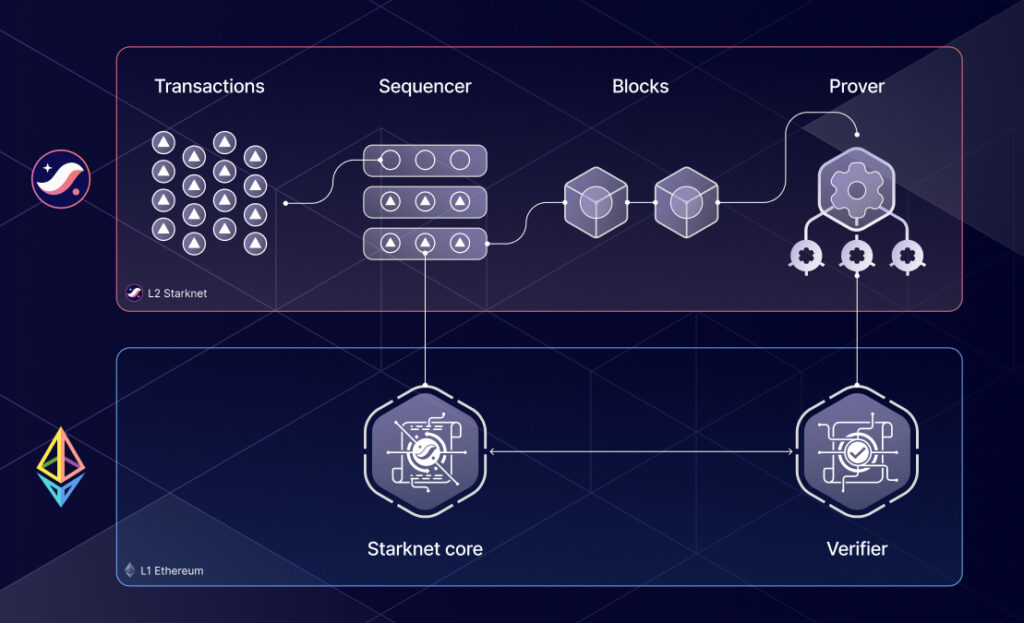
Sidechains
Unlike rollups, which rely on Ethereum for data and security, Sidechains are separate blockchains compatible with Ethereum’s L1 via a two-way bridge. Just as a physical bridge connects two existing locations, a blockchain bridge connects two separate ecosystems. Being a different blockchain, Sidechains are designed to scale but do not inherit Ethereum’s decentralization and security. This makes them less secure than Ethereum or L2 solutions.
Both Sidechains and L2s are general-purpose scaling solutions, which have multiple measures in place to ensure the network is accessible to everyone. Each scaling solution has its own design of Data Availability, security, process mechanism and more, and apps and users can choose the trade-off that suits them best.
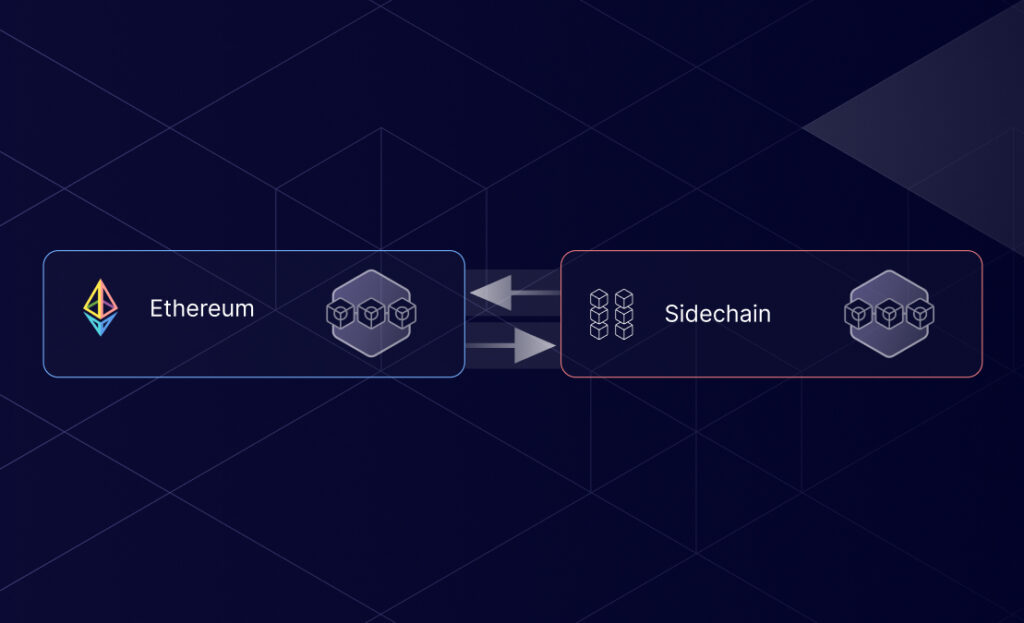
Appchains (!!)
Appchains are another step in providing dApps a wider range of scaling solutions to match their needs; namely, they are customized L2s. Appchains were created from the understanding that some applications would like their users to have some features or UX designed specifically for them and, therefore, require a scaling solution that will cater to their unique needs. Specific requirements that cannot be met by the public network may hinder an application’s scalability, but this can be resolved by using a private L2. This private L2 can settle data on an L1, like Ethereum, or become an L3 and settle it on an L2, such as Starknet. This way, the appchain inherits the security of the base layer.
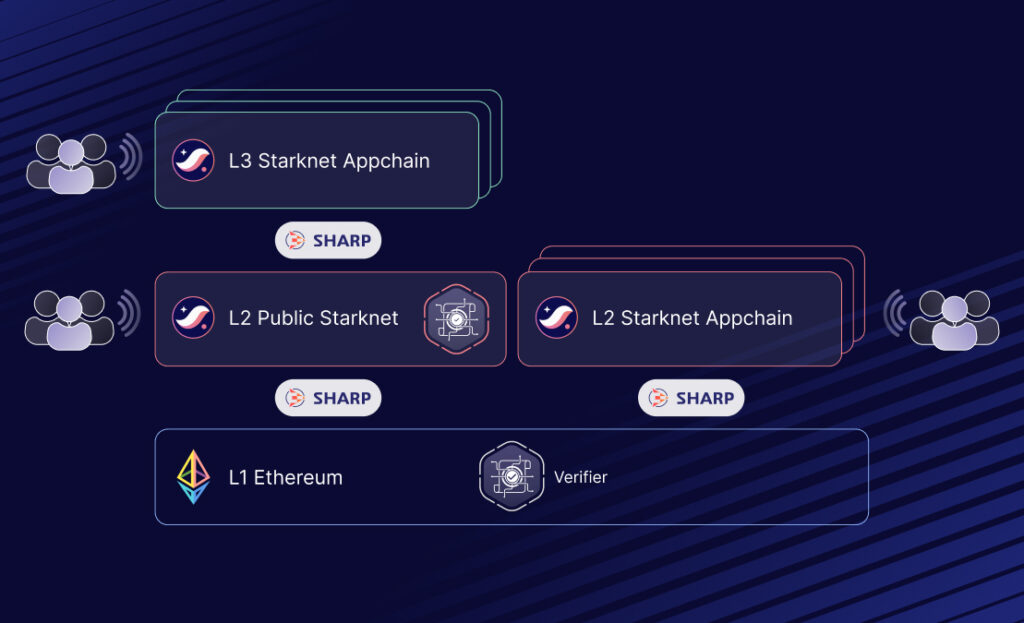
Why Appchains?
The public Starknet network provides massive scaling and Ethereum-level security to many applications, but appchains have emerged as a valuable addition to the Starknet ecosystem. For some applications, appchains are a solution that better suits their specific scaling needs. Here are four of them:
- Super Scaling: Scalability encompasses two critical elements – high speed and low fees. When using an appchain, the throughput is unaffected by the activity of other applications, as the application has its dedicated network. This ensures a consistently smooth performance. In addition, if an application chooses to operate as an L3 and settle on L2, it can scale even further, as its operation is being scaled twice by two layers of scaling. In the future, once the possibility to choose data availability mode on each layer is implemented, developers will be able to achieve a remarkable overall cost reduction from L1 to L3.
- Customization: With appchains, developers are free to modify the configuration of the network (e.g., block size, latency, Data Availability mode) and even implement features not supported by the protocol.
Another benefit developers gain by using an appchain is the ability to choose different stack providers. The Starknet stack is diverse and continues to evolve, offering those who would like to deploy their app as an appchain to choose from the multiple providers of the Starknet stack. This includes sequencers, wallet integrations, full nodes, API services, execution engines, and more. As the Starknet community continues to push forward as one of the largest L2 devs communities, many new and innovative projects are being developed. Explore the list of projects operating to decentralize the Starknet stack in this blog post.

- Dedicated environment for a group of apps: Appchains foster the perfect requirements for an app or brand that wants to create an ecosystem of applications. Building an ecosystem on an appchain allows builders to determine their own token or fee mechanism.
- Proof-optimized: Building on Starknet means writing the entire code in Cairo. Released in January 2023, Cairo’s newest version is not only optimized for writing smart contracts and for generating Validity Proofs (ZK proofs) by using 256-uint, as it always was, it is now designed to write safer code, and it is easy to learn, giving devs a friendly, Rust-like coding experience.
Summary
Appchains offer a unique blend of cost-efficiency, customization, and experimentation, making them an appealing option for developers, and expanding the variety of options within Starknet’s scaling buffet. Starknet appchains optimize performance, enhance throughput, and enable powerful tailored solutions for decentralized applications. With the potential to let developers realize their vision with the accuracy they need and with as few barriers as possible, appchains are poised to reshape the future of the blockchain ecosystem.
To learn more, visit the Starknet website or stay in the know on the latest happenings in the Starknet ecosystem by following Starknet on X.

